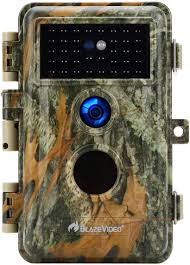Game Camera, is a digital camera system embedded within video games that captures and renders the player’s perspective of the game world. It determines what players see on their screens and how they navigate the environment. The design and functionality of the game camera can significantly influence gameplay mechanics, narrative delivery, and player immersion.
Types of Game Cameras
Game cameras can be categorized based on their perspective and functionality. Here are the most common types:
- First-Person Camera (FPC): This perspective places the player directly in the shoes of the character, allowing them to experience the game world through the character’s eyes. This camera style is prevalent in first-person shooters (FPS) like Call of Duty and role-playing games (RPGs) such as Skyrim. It enhances immersion by providing a direct line of sight into the game environment.
- Third-Person Camera (TPC): In this perspective, the camera follows the player’s character from a distance, typically positioned behind and above the character. This style allows players to see their character’s actions and surroundings more comprehensively, making it popular in action-adventure games like The Legend of Zelda: Breath of the Wild and Assassin’s Creed.
- Top-Down Camera: This camera view looks down on the game world from above. It is often used in strategy games, RPGs, and certain indie titles, allowing players to oversee large areas and manage multiple characters simultaneously. Games like Diablo and Hades utilize this perspective effectively.
- Fixed Camera: Some games employ fixed cameras, where the camera is positioned at set angles and locations throughout the game. This style can enhance storytelling and atmosphere, as seen in classic survival horror games like Resident Evil and Silent Hill.
- Dynamic Camera: A dynamic camera adapts to the player’s actions and movements, shifting angles to provide optimal views during gameplay. This approach enhances excitement and drama, commonly seen in modern action games and cinematic experiences.
The Evolution of Game Cameras
The design and functionality of game cameras have evolved significantly over the years:
- Early Days: Early games utilized simple static or top-down views due to hardware limitations. Games like Pong and Space Invaders featured basic graphics and perspectives.
- 3D Revolution: The introduction of 3D graphics in the mid-1990s led to the development of more complex camera systems. Games like Doom and Quake showcased first-person perspectives, creating a more immersive experience.
- Cinematic Approaches: The late 1990s and early 2000s saw a rise in cinematic storytelling within games, leading to more sophisticated camera systems that could convey emotion and drama. Titles like Final Fantasy VII and Metal Gear Solid utilized camera techniques to enhance narrative delivery.
- Current Innovations: Today, game cameras continue to advance with innovations such as virtual reality (VR) and augmented reality (AR). These technologies allow players to engage with the game world in entirely new ways, offering immersive experiences that traditional cameras cannot replicate.
The Impact of Game Cameras on Gameplay
The design of a game camera profoundly influences how players interact with and perceive a game. Here are some key impacts:
- Immersion: A well-designed camera enhances immersion, making players feel more connected to the game world. First-person and dynamic cameras can heighten emotional engagement and realism.
- Gameplay Mechanics: The camera affects gameplay mechanics, such as navigation and combat. For example, a third-person camera allows for better spatial awareness during combat, while a first-person camera may require more precision.
- Narrative Delivery: Game cameras can enhance storytelling by framing scenes and directing players’ attention to key narrative elements. Fixed or cinematic cameras can create dramatic moments that resonate emotionally with players.
- Accessibility: Different camera perspectives can improve accessibility for various players. For instance, a top-down view can make it easier for players with mobility challenges to manage their characters effectively.
The Future of Game Cameras
As technology continues to advance, the future of game cameras holds exciting possibilities:
- AI-Driven Cameras: Artificial intelligence could enable cameras to adapt more intelligently to player actions and game environments, providing more personalized experiences.
- Advanced VR and AR: The integration of VR and AR technologies will push the boundaries of traditional camera systems, creating immersive experiences that blend the digital and physical worlds.
- Enhanced Customization: Future games may offer players more options to customize camera settings, allowing them to tailor their experience to their preferences.
Conclusion
Game cameras are a vital component of the gaming experience, shaping how players perceive and interact with virtual worlds. From first-person perspectives that immerse players in action to dynamic cameras that enhance storytelling, the evolution of game cameras has mirrored advancements in technology and design. As gaming continues to evolve, the potential for innovative camera systems will likely lead to even more immersive and engaging experiences for players. Whether you’re exploring vast landscapes, engaging in intense battles, or unraveling complex narratives, the game camera is the lens through which we experience the magic of gaming.




